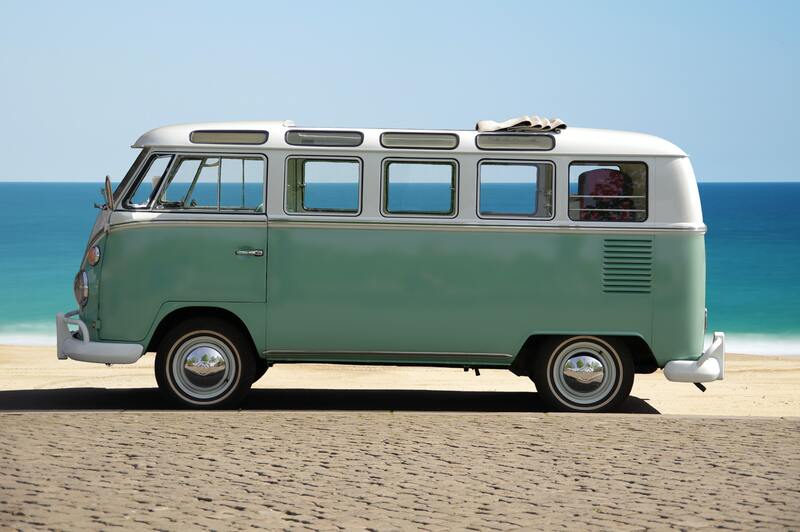How to rebuild a water damaged van? Is it impossible to repair?
Vehicles are sophisticated devices, and floodwater destroys all modern car systems. Water damage may cause short-circuiting electronics, hydro-locked engines, and water-logged gearboxes.

If you are fixing water damage on your own, consider the procedures below. In flooding, we recommend calling your insurance provider as soon as possible.
Signs Of A Water Damage Vehicle
If the dipstick shows anything unusual, such as oil over the entire line, it won’t stay in the dipstick tube. You most likely have water in the crankcase.
The rear main seal is excellent at keeping oil in, but it was not built to keep flood water out; thus, it will seep into the engine internals after only a few hours of immersion.
Search for water in the fluids, including the coolant, power steering, and fuel systems. Water may quickly get into a classic, and it is better to check for it by detaching a gasoline line and emptying it into a pan.
If you discover any water, drain the tank, clean the lines, and replace the fuel filter.
How To Rebuild Water Damaged Van
Submerging a van in water may cause havoc on its engine, electrical system, and interior. If your automobile has been immersed in water more than halfway up its wheels, proceed as follows:
1. Don’t start the vehicle
If a hydro-locked engine starts, it will eventually destroy itself. If the oil level is exceptionally high, water has most likely entered the crankcase because oil floats on water; it is inefficient as a lubricant.
Wear eye protection before removing the spark plugs and manually turn the engine over using the crankshaft balancer to drive water out of the cylinders.
Compressed air is blown into the spark plug openings, and intake is also beneficial. Make sure the oil is drained, and the oil filter is replaced.
If the engine is damaged, read this article about how to fix water damaged engine to help you solve your problem.
2. Inspect the transmission fluid levels
In water, automatic transmission discs and bands tend to delaminate. Lack of lubrication can destroy manual gearbox synchronizers, and a saturated clutch can rust to the flywheel.
Transmission difficulties can be alleviated by thoroughly emptying and replacing fluids, and the clutch may release after the engine has reached operating temperature.
3. Check safety systems
For example, water-logged brake fluid might evaporate, resulting in reduced braking force. Use enough new fluid to flush the brake and power steering systems properly.
Brake pads and shoes can cause rotors and drums to rust, but moving the automobile might remove them.
4. Check the air filter
Many current automobiles have low air intake, allowing water to enter the air filter and the engine. If the filter is moist and there is water in the air filter, the machine has water.
If you want to flush the engine manually, use the following methods. It should be noted that attempting to clean water incorrectly might result in significant damage.
Therefore you may want to leave this task to a technician.
5. Check the electrical systems
If the engine appears to be in good working order, inspect all electrical components, including turn signals, air conditioning, power locks, headlights, audio, and interior lighting.
If you observe anything out of the standard, such as the way the car runs or the gearbox shifts, it might be a symptom of an electrical issue. Take the vehicle to a repair, and remember that insurance may cover the damage.
6. Remove all things inside the van
Remove the automobile’s seats, carpets, and insulation to dry it properly. Remove any residual puddles with a dry or wet vacuum while inspecting nooks and crannies for water.
Park the car outdoors on a bright day, with the doors and windows open, and spread out everything.
If in doubt, request that the automobile be wrecked. A flood-damaged vehicle may have issues months or even years after the occurrence.
If your automobile is on the verge of being totaled, consider requesting that your insurance provider declare it a total loss. It will cost money to replace it, but you may save yourself from huge issues in the future.
For more information, read the following article that can help you on how to clean water damaged car to learn more!
How To Prevent Water Damage
Preventing water damage to your car is the easiest method to avoid it. Although you cannot control the weather, you can take several essential things to reduce your risk, such as avoiding driving over a deep flood or keeping your car closed tightly to prevent water from entering.
If a storm is approaching, keep your car away from low-lying regions likely to flood. If feasible, park your vehicle on higher ground to protect the undercarriage and components from the damaging effects of water.
How Much Does A Water Damage Van Cost to Repair
This cost may vary depending on your flood-damaged vehicle’s damage. Some flooded automobile repair charges will be more than reasonable, while others will be avoided.
Conclusion
Since you already know how to rebuild a water damaged van, you can quickly determine and repair your damaged vehicle without spending a lot of money. If you can’t fix it by yourself anymore, don’t hesitate to contact a technician or inquire with your insurance company to see whether it is covered under their policy.
